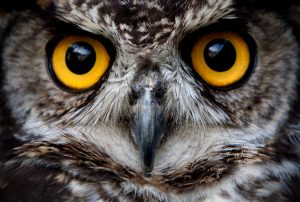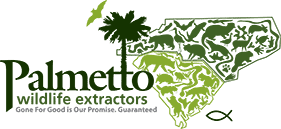Throughout history, owls have been seen as creatures that symbolize wisdom, good luck, transformation, self-actualization, and intuitive development. Then, there are those who believe that owls are a harbinger of bad luck. Some believe that they are associated with death.

Hearing an owl hoot three times could result in misfortune. It has even been said that owls are the only types of creatures that have the ability to live with spirits or ghosts. While all this can and has been debated, there is one thing that is certain; that is, owls may pose a danger to pets – particularly cats and dogs.
Attacks
Owl attacks on humans are considered to be rare; however, it is important to know that they can occur. For the purpose and intent of this guide, though, we are going to focus on their attacks of small creatures – which are quite common.
Owls are known to attack any animal of any size if they are within their territory or they feel threatened. This is especially the case with cats and dogs. The danger lies in the fact that the curved talons and the curved beaks are capable of doing a lot of damage.
If you have a pet, you should supervise them at all times. This is especially true if your pet is under 10 pounds.
What Causes an Owl to Attack a Cat or a Dog?
Generally speaking, a hunting owl will attack. Additionally, if the owl is defending what they consider to be their territory, their nest, their offspring, or even their mate, they are known to attack. While these creatures are not known to transmit diseases in a significant manner to people or pets, the talons and beaks cause serious – and sometimes – fatal wounds.
It is also possible for the animal to carry salmonella. This may occur with contact with their features or the droppings they leave behind. If a dog or a cat interferes during hunting or protection activities engaged in by the owl, it is possible for them to be attacked.
Salmonella Sickness
As mentioned previously, salmonella may be passed from an owl to a person or a pet. It is most likely to occur with a pet, though. This is a significant danger owls pose to pets. An animal that has this infection will be lethargic, experience diarrhea that includes mucus and/or blood, have a fever, start to vomit, and may develop dehydration.
Naturally, this type of infection also has the capability of being fatal. If you allow your pets outdoors, always supervise them. This is especially true between dusk and dawn, when the creatures are most active.
The Large and Silent Predator
An owl may grow up to 28 inches in length, have a wingspan of 6.6 feet, and weigh just over 10 pounds. The bone structure within its foot is highly durable and allows the animal to grab and lift up their pretty. The talons will then spread out so that it has a firm hold. They glide silently throughout the air. They may fly at rates up to 40 mph.
It may lift more than its weight. These large and silent predators are carnivorous hunters and extremely opportunistic. If you have owls, do all that you are able to in order to keep your pets safe. For tips and tricks on avoiding confrontations with wild owls, you may contact us here at Palmetto Wildlife Extractors today by calling: 803-676-7012

